Unit 5 Amazing things Grammar课件:一般过去时
文档属性
| 名称 | Unit 5 Amazing things Grammar课件:一般过去时 |  | |
| 格式 | zip | ||
| 文件大小 | 899.1KB | ||
| 资源类型 | 教案 | ||
| 版本资源 | 牛津译林版 | ||
| 科目 | 英语 | ||
| 更新时间 | 2017-04-09 07:47:35 | ||
图片预览


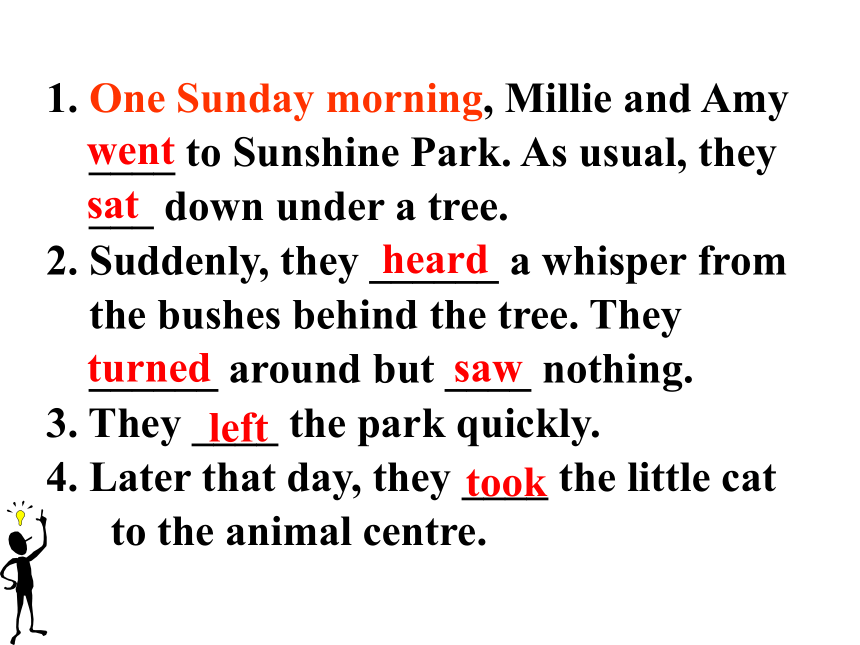
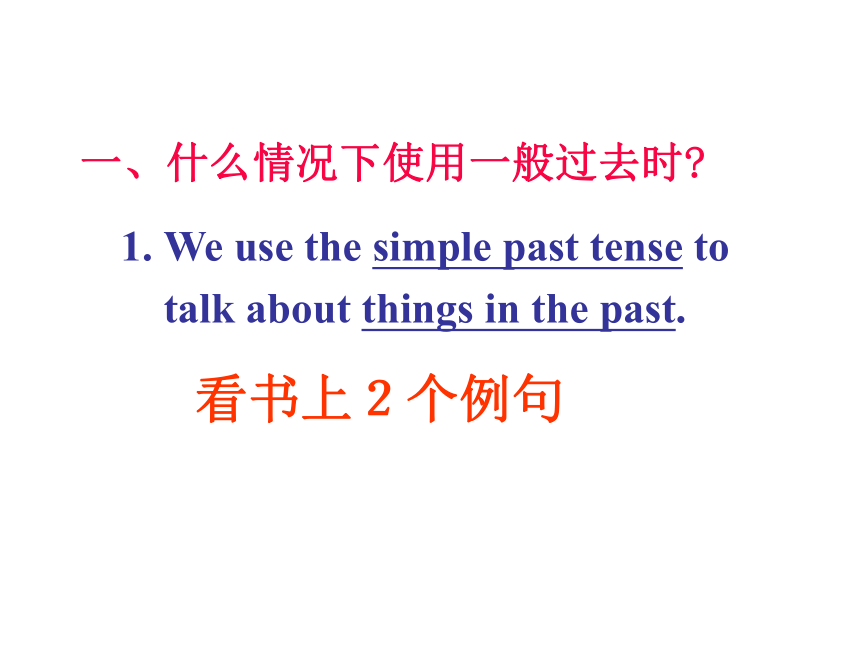

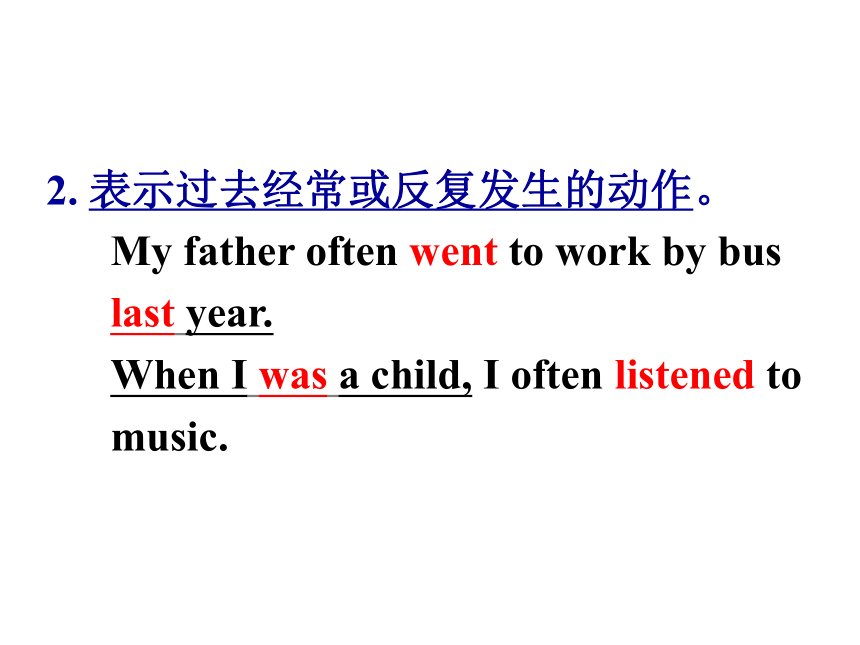
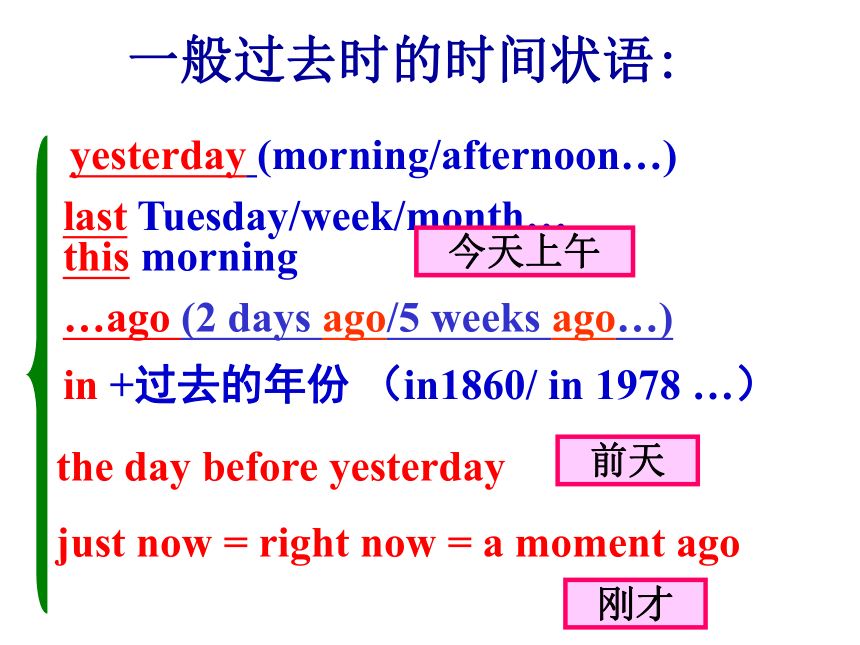
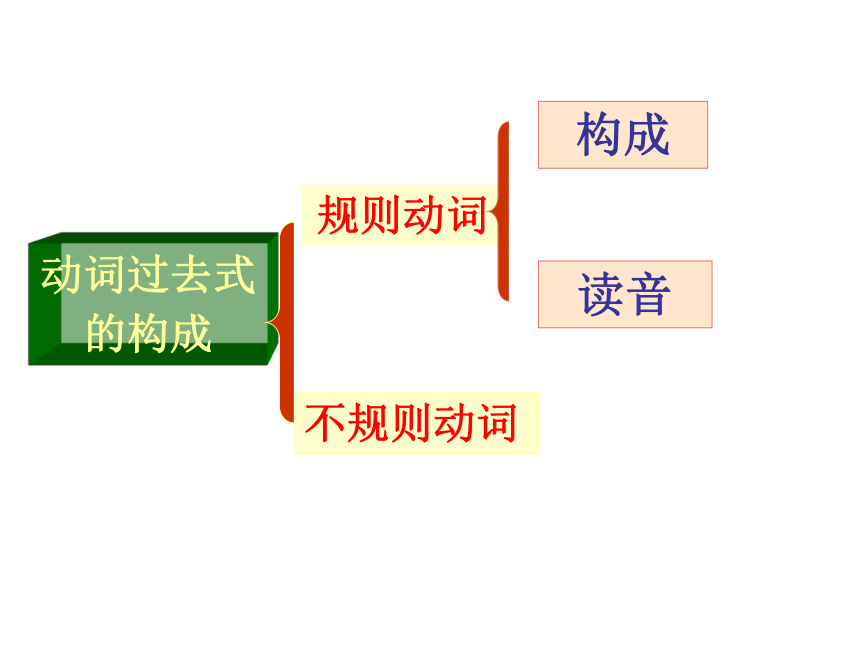


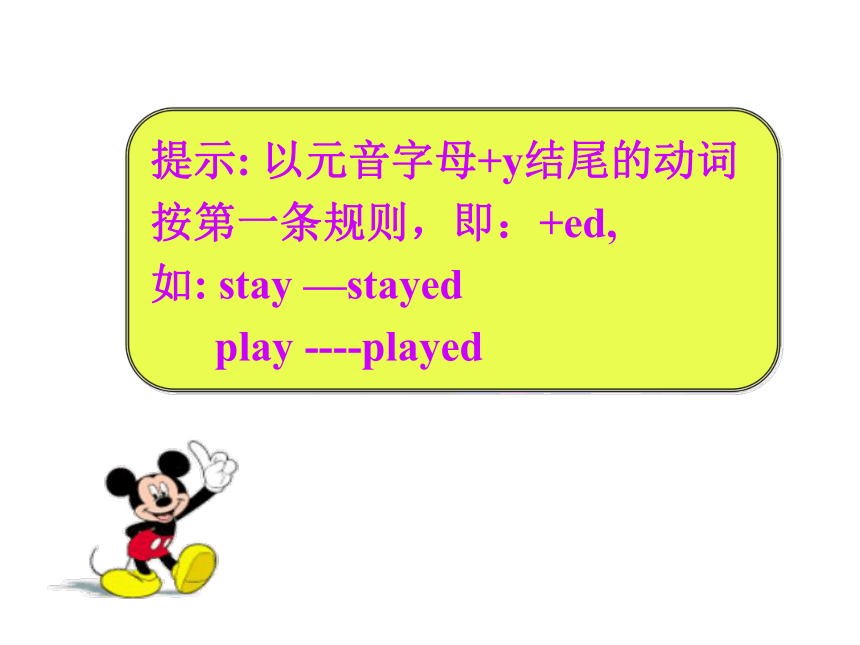
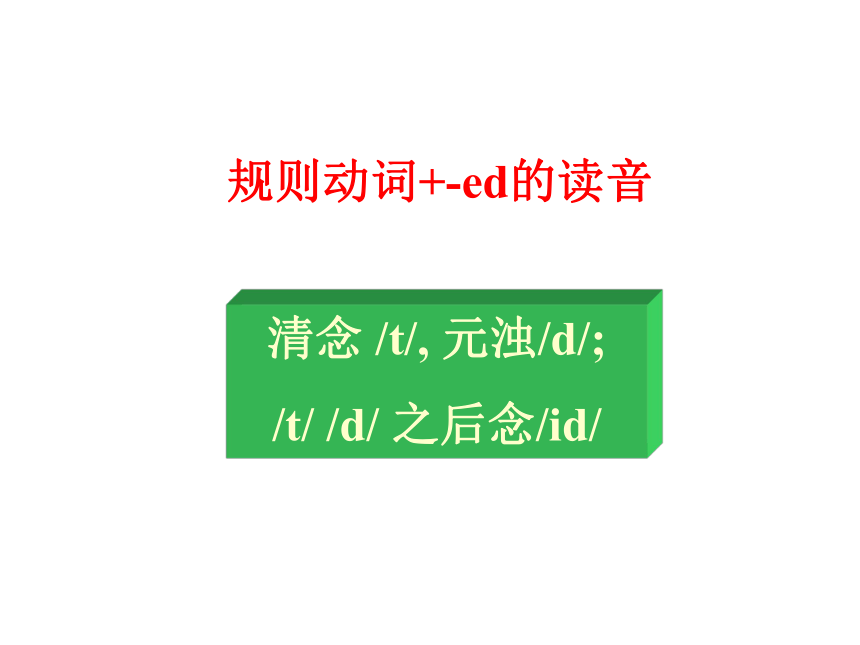
文档简介
课件31张PPT。Unit 5 Amazing things一般过去时态专题复习 1. One Sunday morning, Millie and Amy
____ to Sunshine Park. As usual, they
___ down under a tree.
2. Suddenly, they ______ a whisper from
the bushes behind the tree. They
______ around but ____ nothing.
3. They ____ the park quickly.
4. Later that day, they ____ the little cat
to the animal centre.wentsatheardturnedsawlefttookWe use the simple past tense to talk about things in the past.一、什么情况下使用一般过去时?看书上2个例句用 法1. 表示过去某个时间发生的动作或存在 的状态。
He was here yesterday.
I got up at six thirty yesterday morning.
My father was at work yesterday
afternoon.
Did you have a good time last summer?2. 表示过去经常或反复发生的动作。
My father often went to work by bus
last year.
When I was a child, I often listened to
music.一般过去时的时间状语:last Tuesday/week/month…yesterday (morning/afternoon…)this morning…ago (2 days ago/5 weeks ago…) the day before yesterday前天in +过去的年份 (in1860/ in 1978 …)just now = right now = a moment ago刚才今天上午动词过去式
的构成规则动词不规则动词构成读音规则动词过去式的构成构成规则例词2. 结尾是e的动词
加-d1. 一般在动词原形
末尾加-edlive lived hope hoped use usedlook looked play played start started规则动词过去式的构成构成规则例词3. 末尾是辅-元-辅的重读音节,双写这个辅音字母, 再加-ed stop stopped
plan planned
chat chatted4. 结尾是“辅音字母+y”
的动词, 先变“y”为
“i”, 再加-ed study studied
carry carried提示: 以元音字母+y结尾的动词
按第一条规则,即:+ed,
如: stay —stayed
play ----played清念 /t/, 元浊/d/;
/t/ /d/ 之后念/id/规则动词+-ed的读音说明:
清念 /t/,即 ed 在清辅音后面念
/t/,例:
finished helped passed
cooked
2. 元浊 /d/,即 ed 在元音,浊辅音后
面念 /d/,例:
borrowed enjoyed called
moved 说明:
3. /t/ /d/ 之后念 /id/,即 ed 在 /t/ /d/
音后面念 /id/,例:
wanted shouted needed
countedwant— talk —
like — worry —
try — stop — wanted talked liked worried tried stopped 写出下列动词的过去式。二、规则动词过去式的构成方法 三、不规则动词的过去式不是加ed 构成的, 需要我们记住它们。不规则动词的过去式归纳起来有这样几种类型(见下表): is --- was are --- were
am--- was have----had
turn to P106 to get more不规则动词的过去式 start ______
love _____
play ______
plan ______9. leave _____
10. tell _____
11. stand _____
12. bring ______5. reply _____
6. say _____
7. meet _____
8. hear ______startedplayedlovedplannedsaidrepliedleftmetstoodtoldheardbroughtPRACTISEFinish Part A on page 62.This morning, we _____ (go) to the Fun World Museum. When we ____ (get) to the museum, there _____ (be) a lot of people there. We _____ (spend) three hours in the museum. I ____ (take) a lot of photos. Some of us _______ (buy) cards of the animals there. We _____ (come) back to school at 1 p.m. We ____ (have) a great time!wentwerespenttookboughtcamehadgotFinish Part B on page 62.Millie: We _____ (go) to the Fun World Museum
the day before yesterday, Daniel. It ____
(be) so interesting!
Daniel: Really? Tell me all about it.
Millie: OK. We ____ (see) a small monkey, only
11 centimetres tall.
Daniel: That’s amazing! What else?
Millie: We also _____ (learn) about some
strange birds like dodos. They _____ (live)
on the earth a long time ago.
Daniel: That’s cool!wentsawwaslearntlivedFinish Part C on page 62.巧记动词过去时态动词一般过去时,表示过去发生的事;
be用was或用were, have, has变had;
谓语动词过去式,过去时间做标志;
一般动词加-ed,若是特殊得硬记。
否定句很简单,主语之后didn’t添;
疑问句也不难,did放在主语前;
如果谓语之前有did,谓语动词需还原;
动词若是was, were, 否定就把not添。肯定句
主语+谓语动词过去式……
He heard a whisper.
They went to the park again last Sunday.四、谓语动词为实义动词的一般过去时的句子结构2) 否定句
主语 + didn’t +谓语动原形 ……
I didn’t go to the park yesterday morning.
He didn’t hear a whisper.
They didn’t find anything in the bushes. 3)一般疑问句
Did +主语+谓语动原形……?
Yes, 代词+did. / No, 代词+ didn’t.
Did you go to the park yesterday morning?
Yes, I did.
Did he hear a whisper?
No, he didn’t.课堂小结 课堂小结 课堂小结 巧记动词过去时态动词一般过去时,表示过去发生的事;
be用was或用were, have, has变had;
谓语动词过去式,过去时间做标志;
一般动词加-ed,若是特殊得硬记。
否定句很简单,主语之后didn’t添;
疑问句也不难,did放在主语前;
如果谓语之前有did,谓语动词需还原;
动词若是was, were, 否定就把not添。
____ to Sunshine Park. As usual, they
___ down under a tree.
2. Suddenly, they ______ a whisper from
the bushes behind the tree. They
______ around but ____ nothing.
3. They ____ the park quickly.
4. Later that day, they ____ the little cat
to the animal centre.wentsatheardturnedsawlefttookWe use the simple past tense to talk about things in the past.一、什么情况下使用一般过去时?看书上2个例句用 法1. 表示过去某个时间发生的动作或存在 的状态。
He was here yesterday.
I got up at six thirty yesterday morning.
My father was at work yesterday
afternoon.
Did you have a good time last summer?2. 表示过去经常或反复发生的动作。
My father often went to work by bus
last year.
When I was a child, I often listened to
music.一般过去时的时间状语:last Tuesday/week/month…yesterday (morning/afternoon…)this morning…ago (2 days ago/5 weeks ago…) the day before yesterday前天in +过去的年份 (in1860/ in 1978 …)just now = right now = a moment ago刚才今天上午动词过去式
的构成规则动词不规则动词构成读音规则动词过去式的构成构成规则例词2. 结尾是e的动词
加-d1. 一般在动词原形
末尾加-edlive lived hope hoped use usedlook looked play played start started规则动词过去式的构成构成规则例词3. 末尾是辅-元-辅的重读音节,双写这个辅音字母, 再加-ed stop stopped
plan planned
chat chatted4. 结尾是“辅音字母+y”
的动词, 先变“y”为
“i”, 再加-ed study studied
carry carried提示: 以元音字母+y结尾的动词
按第一条规则,即:+ed,
如: stay —stayed
play ----played清念 /t/, 元浊/d/;
/t/ /d/ 之后念/id/规则动词+-ed的读音说明:
清念 /t/,即 ed 在清辅音后面念
/t/,例:
finished helped passed
cooked
2. 元浊 /d/,即 ed 在元音,浊辅音后
面念 /d/,例:
borrowed enjoyed called
moved 说明:
3. /t/ /d/ 之后念 /id/,即 ed 在 /t/ /d/
音后面念 /id/,例:
wanted shouted needed
countedwant— talk —
like — worry —
try — stop — wanted talked liked worried tried stopped 写出下列动词的过去式。二、规则动词过去式的构成方法 三、不规则动词的过去式不是加ed 构成的, 需要我们记住它们。不规则动词的过去式归纳起来有这样几种类型(见下表): is --- was are --- were
am--- was have----had
turn to P106 to get more不规则动词的过去式 start ______
love _____
play ______
plan ______9. leave _____
10. tell _____
11. stand _____
12. bring ______5. reply _____
6. say _____
7. meet _____
8. hear ______startedplayedlovedplannedsaidrepliedleftmetstoodtoldheardbroughtPRACTISEFinish Part A on page 62.This morning, we _____ (go) to the Fun World Museum. When we ____ (get) to the museum, there _____ (be) a lot of people there. We _____ (spend) three hours in the museum. I ____ (take) a lot of photos. Some of us _______ (buy) cards of the animals there. We _____ (come) back to school at 1 p.m. We ____ (have) a great time!wentwerespenttookboughtcamehadgotFinish Part B on page 62.Millie: We _____ (go) to the Fun World Museum
the day before yesterday, Daniel. It ____
(be) so interesting!
Daniel: Really? Tell me all about it.
Millie: OK. We ____ (see) a small monkey, only
11 centimetres tall.
Daniel: That’s amazing! What else?
Millie: We also _____ (learn) about some
strange birds like dodos. They _____ (live)
on the earth a long time ago.
Daniel: That’s cool!wentsawwaslearntlivedFinish Part C on page 62.巧记动词过去时态动词一般过去时,表示过去发生的事;
be用was或用were, have, has变had;
谓语动词过去式,过去时间做标志;
一般动词加-ed,若是特殊得硬记。
否定句很简单,主语之后didn’t添;
疑问句也不难,did放在主语前;
如果谓语之前有did,谓语动词需还原;
动词若是was, were, 否定就把not添。肯定句
主语+谓语动词过去式……
He heard a whisper.
They went to the park again last Sunday.四、谓语动词为实义动词的一般过去时的句子结构2) 否定句
主语 + didn’t +谓语动原形 ……
I didn’t go to the park yesterday morning.
He didn’t hear a whisper.
They didn’t find anything in the bushes. 3)一般疑问句
Did +主语+谓语动原形……?
Yes, 代词+did. / No, 代词+ didn’t.
Did you go to the park yesterday morning?
Yes, I did.
Did he hear a whisper?
No, he didn’t.课堂小结 课堂小结 课堂小结 巧记动词过去时态动词一般过去时,表示过去发生的事;
be用was或用were, have, has变had;
谓语动词过去式,过去时间做标志;
一般动词加-ed,若是特殊得硬记。
否定句很简单,主语之后didn’t添;
疑问句也不难,did放在主语前;
如果谓语之前有did,谓语动词需还原;
动词若是was, were, 否定就把not添。
